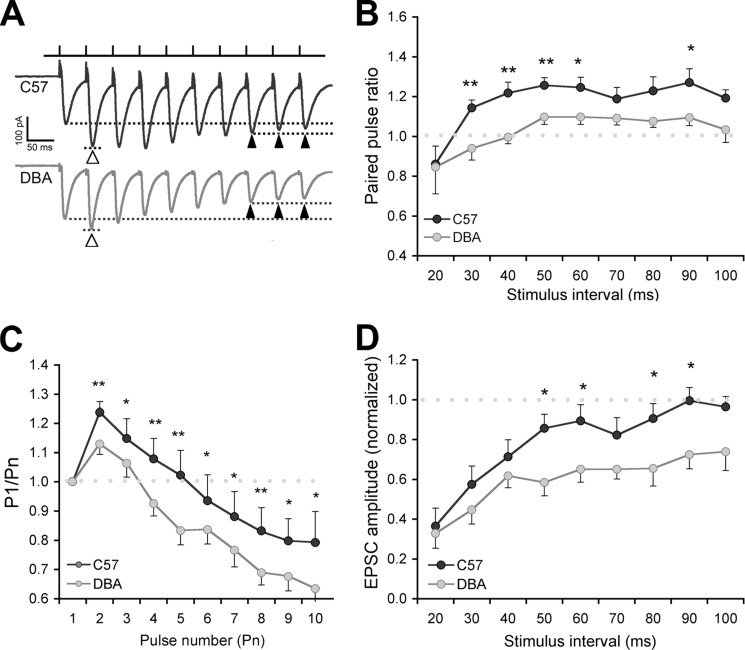FIGURE 6.
Paired-pulse ratio is affected in DBA mice. A, example trace of single experiments (50-ms interpulse interval) showing paired-pulse facilitation in response to the first two stimuli in the train (open arrowheads, dotted lines) in C57 (12 slices from eight animals) but hardly in DBA (13 slices in six animals). The last three pulses from each train were averaged to study short term plasticity (closed arrowheads, dotted lines), which shows depression in DBA. EPSCs are averaged responses from 20 sweeps (stimulus artifacts truncated). B, effect of interstimulus interval on paired-pulse facilitation. Paired-pulse ratio is plotted against the interpulse interval. Facilitation is reduced in DBA mice, mainly with high frequency synaptic input. C, at the 50-ms interval (20 Hz), the 4th pulse leads to depression in DBA mice compared with the 7th to 10th pulse in C57 mice. D, effect of interstimulus interval on short term plasticity. Whereas high frequency (20–50 Hz; 20–40 ms) input leads to depression in both lines, DBA mice show a clear depression also at low frequency input (10–20 Hz; 50–100 ms). *, p < 0.05; **, p < 0.01.

